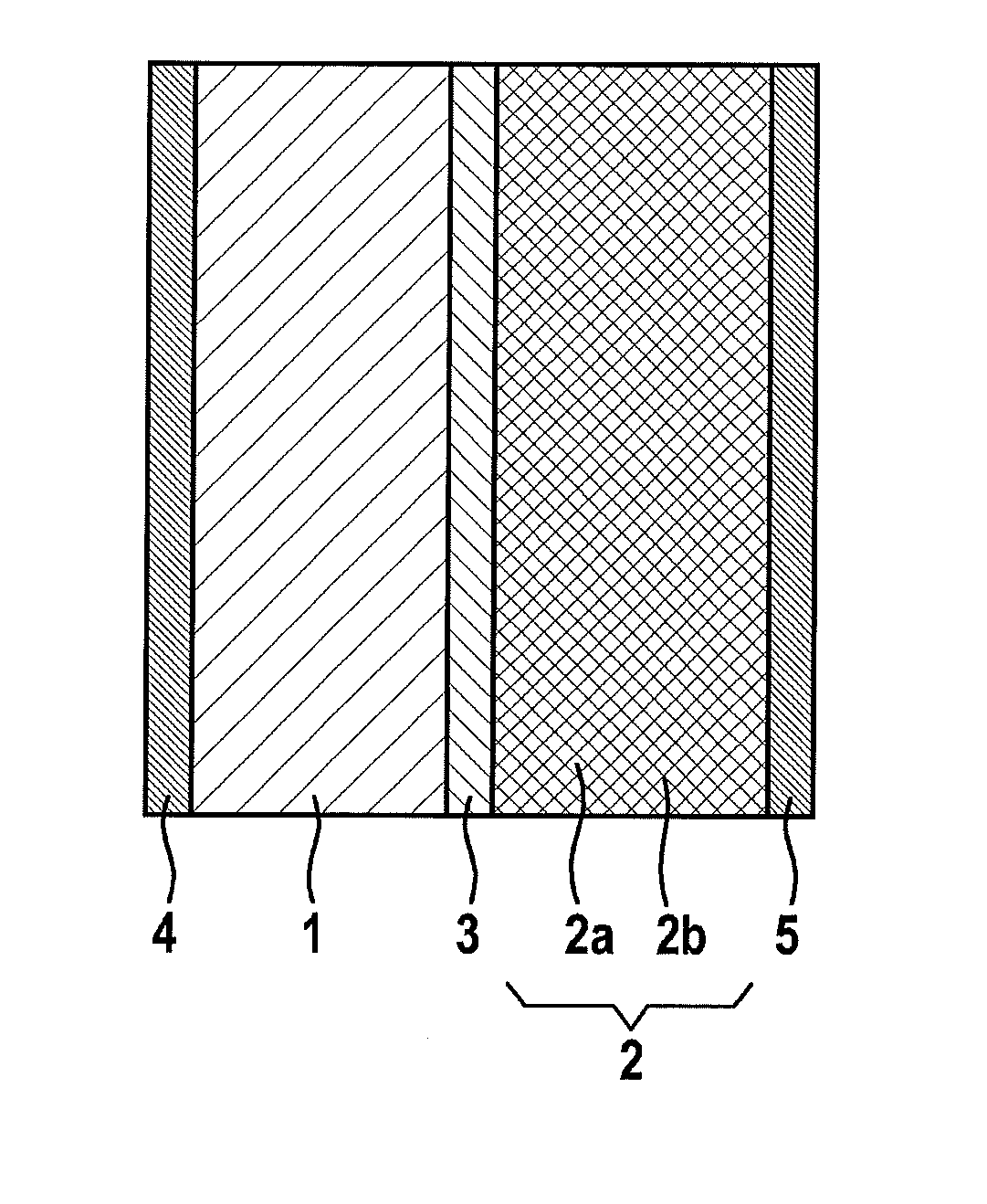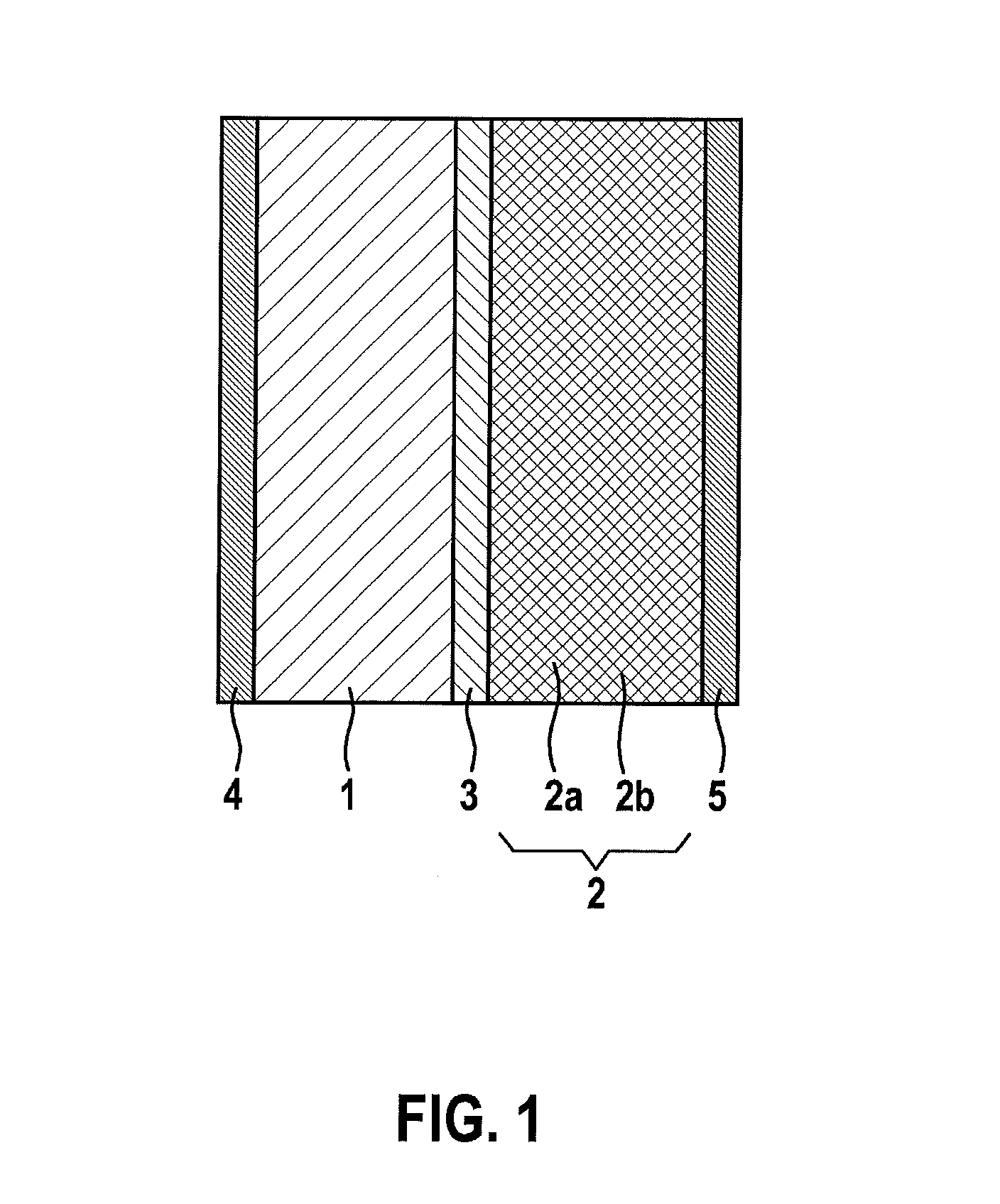All-solid-state cell
a cell and all-solid-state technology, applied in the direction of cell components, non-aqueous electrolyte cells, alkali titanates, etc., can solve the problems of battery capacity dropping after several charge and discharge cycles, liquid electrolytes by solid-state electrolytes is normally accompanied by a reduction of cathode capacity, etc., to improve cell cycle stability, high lithium ions transport, and increase cell safety
- Summary
- Abstract
- Description
- Claims
- Application Information
AI Technical Summary
Benefits of technology
Problems solved by technology
Method used
Image
Examples
Embodiment Construction
[0036]FIG. 1 shows that the all-solid-state cell includes an anode 1, a cathode 2 and a separator 3 situated between anode 1 and cathode 2. In the shown specific embodiment, anode 1 is a lithium metal anode. Separator 3 is formed from a lithium ions-conducting solid-state electrolyte, formed, for example, from lithium sulfide-phosphorus sulfide (Li2S•P2S5) and / or lithium lanthanum zirconate (Li7La3Zr2O12).
[0037]Cathode 2 includes a composite material which includes at least one lithium titanate 2a and at least one lithium ions-conducting solid-state electrolyte 2b. In particular copper-doped and / or iron-doped lithium titanates of the general chemical formula: Li4+x−y−zFe3yCuzTi5−2y−m(Nb,Ta)mO12 where 0≦x≦3, 0≦y≦1, z≧0 and 0≦m≦0.1 have proven to be advantageous as lithium titanates 2a. For example, lithium-sulfide-phosphorus sulfides (Li2S•P2S5), lithium lanthanum zirconates having a garnet structure (Li7La3Zr2O12) or lithium niobates (LiNbO3) as well as mixtures of them and layer sy...
PUM
| Property | Measurement | Unit |
|---|---|---|
| electrical conductivity | aaaaa | aaaaa |
| lithium-ion conductivity | aaaaa | aaaaa |
| electrical conductivity | aaaaa | aaaaa |
Abstract
Description
Claims
Application Information
 Login to View More
Login to View More - R&D
- Intellectual Property
- Life Sciences
- Materials
- Tech Scout
- Unparalleled Data Quality
- Higher Quality Content
- 60% Fewer Hallucinations
Browse by: Latest US Patents, China's latest patents, Technical Efficacy Thesaurus, Application Domain, Technology Topic, Popular Technical Reports.
© 2025 PatSnap. All rights reserved.Legal|Privacy policy|Modern Slavery Act Transparency Statement|Sitemap|About US| Contact US: help@patsnap.com


